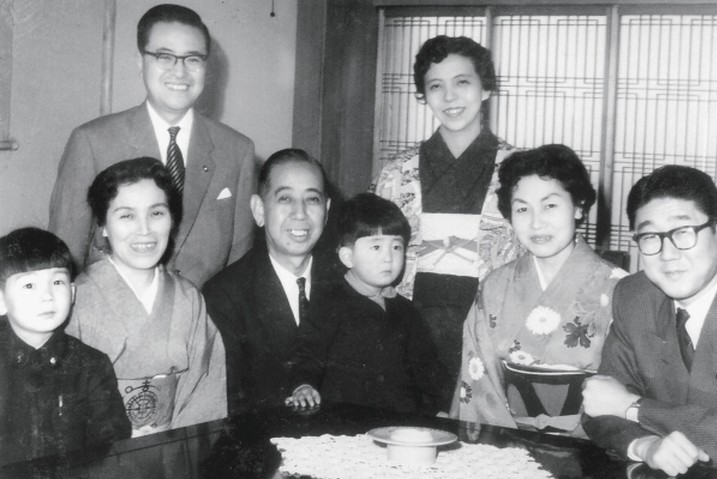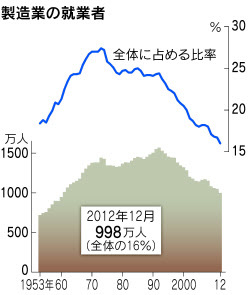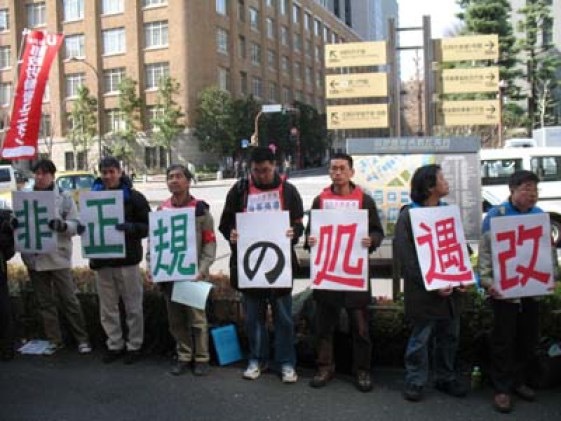I would like to approach “Instability, the Crisis of Politics, and Social Movements” from the standpoint of political theory, Japanese history, and the present situation. This is not a topic specific to Japan, but one that is universal. I will begin by offering reflections from the standpoint of thought. Given that even what is universal will find different expression depending on place and era, I will also address the history and present-day circumstances of Japanese society. But by history, I shall be referring to developments since the 1970s.
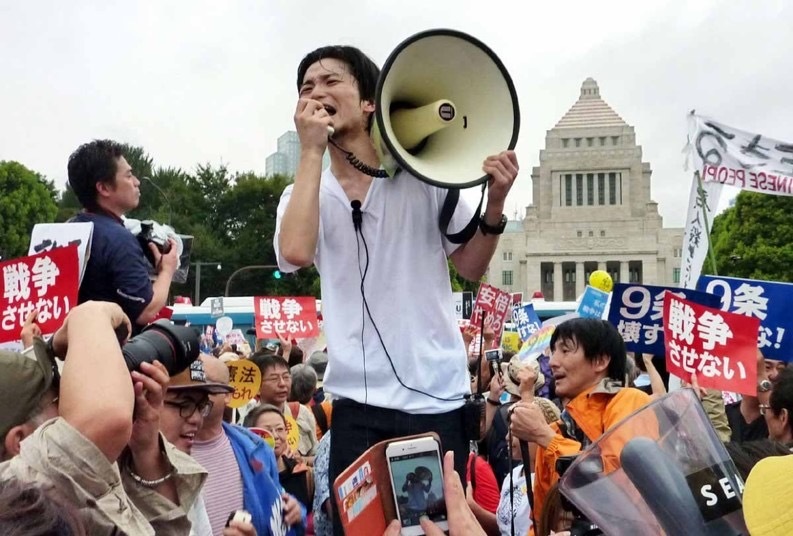 |
The View from Political Theory
Modernity is a time of instability. We could even say that increasing instability is the distinguishing characteristic of modernity. Why should instability increase in modern times? I believe the reason is that modernity is founded on a respect for free will. I am not a Christian, but I have read the Bible. There, it seems that Adam and Eve’s eating of the fruit of knowledge and being expelled from paradise is presented as the first instance of humanity possessing free will. Western thinkers such as Jean-Jacques Rousseau identify free will as the origin of inequality, but they also argue that it is a motive force for progress. Human beings, as long as they live in a community and abide by convention, are able to enjoy a sense of stability. But that would preclude economic and scientific development. With modernity free will comes to be valorized. As modernization advances, it gives rise to inequality, instability, and political crisis.
Why does inequality give rise to political crisis? Political scientists say that it is because it leads to the decline in numbers of the middle class, associated with rational decision-making. But a little more analysis is called for here. By middle class, we mean people who have a certain level of property beyond the minimum. Possession of property frees us from poverty. If faced with the threat of poverty and terror, human beings become preoccupied with securing food and safety and lose the capacity to act based on reason. But property and income are not the same thing. To increase income requires taking risks, including the risk of diminished property. That can result in instability and the risk of falling into a state of irrationality.
The philosophers of ancient Greece were well aware of these matters. Plato held that if increasing numbers of people were to sell their land for money, humans would grow distant from the idea of the Good, leading to tyrannical rule. Aristotle distinguished between chrematistics, the art of making money, and oikonomike (the original word for “economics”), the art of stabilizing life.
Hannah Arendt, who was influenced by Greek philosophy, distinguished between property and wealth. Property here is “the sense of a place of my own and that part of the world that sustains my daily well-being.” Property in this case refers, for instance, to ownership of land and membership in a community. Wealth, on the other hand, refers to one’s share of the income of society as a whole. In this view, property such as land leads to a sense of responsibility toward society and political participation. Wealth, however, has no such effect and can even encourage irresponsibility and indifference. Arendt thought that with the advent of modernity, as property became tied up with production and consumption, it was headed for destruction. This process brought instability and political crisis. Human beings cannot long endure such a situation.
In order to stabilize their lives, people began to create communities under the social conditions of modernity. Examples are the labor union, or the modern family The family form in which the male engages in wage labor and the female in housework is a new product of modernity. What made the modern communal form possible was stable employment. Without men being employed over the long term, the family form in which women dedicate themselves to housework cannot materialize. It is also easier to organize men who are employed at the same workplace over an extended period into labor unions.
Employment doesn’t simply mean the securing of income. Employment takes human beings and stabilizes them over a given period of time and in a given set of relations. Employment, in other words, is occupation—having, that is, occupying, a place in the world. In that sense, it may be seen as a substitute for property, fulfilling a function lost to modernity: occupying a place in the world. Accordingly, if employment is stabilized, then it is easier for politics to be stable as well.
During the 20th century, social democratic parties with labor unions as their base and conservative parties with families and churches as their base led to political stability in developed countries. We could say that both types of parties were able to receive community support on the presumption that they would provide stable employment. Manufacturing was crucial to employment. Manufacturing in the 20th century generally provided stable employment to males without a high level of education. It was such men who provided stability to labor unions and families. In an era without personal computers or email, there was a huge volume of jobs in the manufacturing sector much of which is now performed by machines or outsourced overseas.
In the present age, however, neither stable industrial employment for the majority of workers nor politics resting on a base of stable labor unions is viable. This is true throughout the world. In the United States, the two major political parties that were dominant in the mid-twentieth century have either lost power or undergone transformation. What can we do in the face of such tendencies? We can’t simply say that increasing income levels will solve the problem. GDP does not take into account property that is not traded on the market. Nor can we assert in any simple sense that increased employment would be good. The reason is that the kind of job increasingly on offer today in both Japan and the United States is irregular work, unstable employment that does not lead to the condition of occupying a stable place in the world.
It is under these conditions that, since 2011, a new kind of social movement has begun to appear in various places around the world including Japan and the United States. What I find of interest is that this movement has been taking the form of occupying places. It is as if the people who had lost their place in the world were trying to recover them. In Egypt, New York, Spain, Hong Kong, Taiwan, and recently, in France, people having been taking over public squares and parliament buildings. There, nameless people have been giving speeches and conducting debates.
This reminds us of the value that Arendt assigned to human action. Here, the action consists of people appearing in the world and claiming a place through their speech acts. Arendt was no friend of socialism or the term “social,” but she did applaud the social movements of the 1960s. Political theory is not my specialization, so I will not continue further. Keeping the above points in mind, l will now turn to Japanese politics and social movements.
The Age of “Japan as Number One”
Let me turn to Japanese developments since the 1970s. There are certain markers in postwar Japanese history, and when I have occasion to lecture abroad, this is the story I sometimes tell.
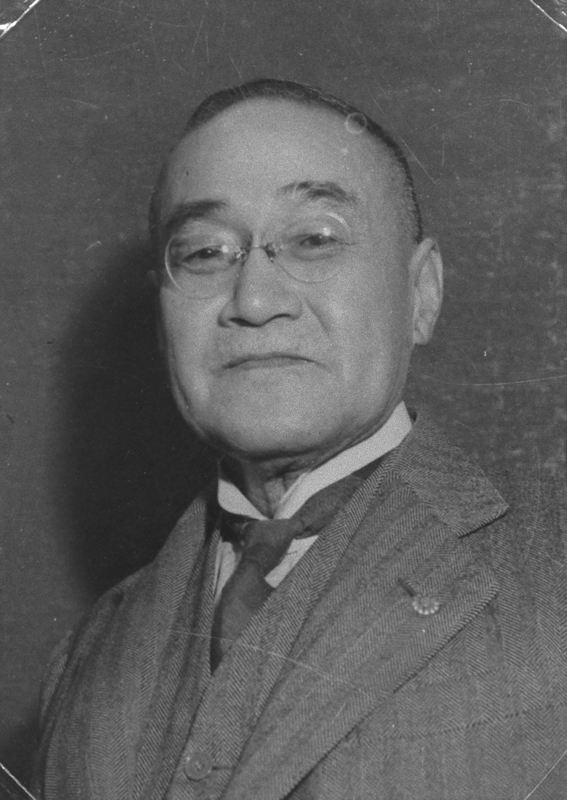 |
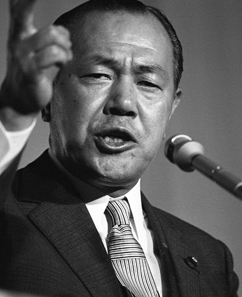 |
| Yoshida Shigeru (1946–7, 48–54) |
Tanaka Kakuei |
The prime ministers of Japan change all the time, and it’s hard to remember their names. So let me tell you the simplest way to keep track.
First of all, the prime minister from 1945 to 1954 was a diplomat. This is because the job of the prime minister was to negotiate with the US Occupation forces. Domestic politics might have been unstable, but the prime minister of that era, could speak fluent English.
From 1955 to 1992, the prime ministers were regional bosses or ex-bureaucrats. During this period, bureaucrats made policy and regional bosses unified the local population. Politics and the economy were stable, but the prime ministers of this period could not speak English.
Since 1993, prime ministers have been either the children or grandchildren of politicians. In other words, they’re either second or third-generation politicians. In general, their knowledge about policy or ability to unify people does not come up to the level of the previous generation. Japanese politics and economics have become unstable. Moreover, most of the prime ministers can’t speak English.
What do you think? It’s easy to remember, isn’t it? If you hang on to this, there is no need to remember the names of individual prime ministers.
|
Kishi Nobusuke (1957-60) with young Abe Shinzo (2006–7, 2012–) |
This periodization of Japanese politics reflects the changes in Japanese society. Changes in the world, in economics, technology, local communities, political parties—all sorts of changes are represented as changes in the successive prime ministers. These chronological markers, however, are by no means unique to Japan. 1945 marked the end of World War II, and 1991, the end of the Cold War. 1955 comes shortly after the death of Stalin, the end of the Korean War, and compromise between the US and the Soviet Union produced a stable Cold War world order. We can see that the Japanese historical markers are in line with those of world geopolitics.
If there is something distinctive about Japan, it is that 1973, an important marker elsewhere, does not stand out in Japan. In the other developed countries, the heightening of social movements in 1968 and the oil crisis of 1973 led to neoliberal reform and political changes in the 1980s. Numerous kinds of social movements emerged during that period. There were similar developments in Japan, but they were less conspicuous than in other countries. This period, from the latter half of the 70s to the beginning of the 90s, is also the time when Japan as an exception attracted the interest of researchers from around the world. It is also the period when social movements were sluggish.
 |
 |
In order to understand present-day Japan, it is necessary to reflect on Japan in that period. There are a number of features of Japan in the latter half of the 70s through the early 90s that distinguish it from other countries. During this period in Japan, people of low educational attainment tended to vote at higher rates than the highly educated. This is the opposite of the trend seen in other developed countries. Further, the number of people employed in manufacturing also increased in Japan during this time. These numbers peaked in 1992. This, too, contrasts with the trend in other developed countries.
What are the underlying reasons for these features? As a matter of fact, the numbers employed in manufacturing briefly declined in Japan after the 1973 oil crisis. But they began to increase again in the latter half of the 1970s and this continued until 1992. A number of theories have been advanced to explain this phenomenon. But whatever the reason, in the late 70s and early 80s, Japan was replacing the US and Europe as the center of world manufacturing, as manufacturing declined there. The US trade deficit with Japan was one consequence. In 1984, one-fourth of the US trade deficit with Japan resulted from exports to the US by American corporations located in Japan and orders for parts and OEM (original equipment manufacturer) contracts by American corporations.
We could say that Japan in the 1980s was the “factory of the world,” holding a position comparable to China in the 2000’s. Once the Cold War was over and the international environment changed, Japanese manufacturing began its decline. Through the 1980s, thanks to the flourishing of the manufacturing sector, the employment situation and politics were stable in Japan. But this stability was of a nature that gave the impression that Japan was exceptional.
 |
In the field of Japanese politics, Gerald Curtis’s Election Campaigning, Japanese Style is a well-known work. Published in 1971, the book recounts the election campaign of a lower-house candidate from the Liberal Democratic Party, the conservative ruling party, with his local community as a base. The politicians of the LDP mobilized numerous communities—farming villagers, shopkeeper and trade associations—in their vote-getting campaigns. Candidates would make “courtesy calls” on influential people in those associations and they, in turn, would mobilize their network and gather votes for those candidates.
Curtis was initially surprised by this mode of campaigning. But then he thought that in fact, it resembled the campaign style of the Democratic Party in New York in the 1950s, where he grew up. Back then, the Democratic Party would mobilize networks of immigrant communities for gathering votes by pork-barrel politics. Curtis anticipated that modernization would force changes on this form of election campaigning. And yet, nearly fifty years later, the LDP’s mode of electioneering has not changed in essence. It is as if modernity had been stopped in its tracks.
There are two principal ways to explain why this was possible. The first has to do with how the law (the Public Offices Election Law) has regulated elections so as to prevent new ways of contesting elections. Until 2013, it was forbidden to use the internet in electioneering. Political parties, moreover, to the present, cannot advertise on television, and politicians can give speeches only at specified places at given times. The basic form of this law goes back to 1925, when universal manhood suffrage was adopted, as a precaution against the growth of proletarian (those without property) political parties. The more numerous these restrictions, the greater the advantage for conservative candidates with access to community networks, specifically, the Liberal Democratic Party which has dominated Japanese politics almost continuously since its founding in 1955.
The second reason has to do with political efforts to stop communal disintegration. Government funds were used for public works, attempting to stem population flow from rural to urban areas and to provide subsidies to shopkeeper and trade associations. Since this aspect is relevant not just to elections, but to Japanese society as a whole, let me explain further. It is not that individual LDP politicians were consciously trying to obstruct the onset of modernization. Rather, in order to be elected, they practiced clientelism, thereby maintaining the communities that were their political base. When faced with opposing communities or organizations they wished to crush, such as labor unions, however, the LDP often adopted neoliberal policies such as privatization rather than policies designed to help maintain communities.
Even though they lacked consistency, policies that served to maintain communities could be put into practice because there was the budget to sustain largescale public works and provide subsidies. And this was possible because Japan at the time held the position of “factory of the world,” and its economy was performing well. Such policies were successful for a time. From the latter half of the 1970s to the first half of the 1980s, the rural-to-urban population flow declined and, by various measures, the income gap in Japan was at its smallest during this period, indeed it was one of the smallest among developed countries.
This was also the period when the “invention of tradition” took place all over Japan. The publishing and tourist industries flourished, and regional “traditional culture” was newly acclaimed. Regional governments and businesses set out to develop local industry and specialty products. Enka (traditional-style Japanese ballads) performances with electric guitars or electronic organs or August Bon Festival dances with participants wearing synthetic kimonos and the music provided by large speakers and records are a product of the 1960s and beyond.
 |
In the eyes of foreigners, Japan in those days seemed to be a society where, along with flourishing technology and manufacturing, the income gap was small, politics stable, labor and education sectors characterized by a high degree of morality, maintenance of local communities, preservation of traditional culture, and, moreover, was safe. In a word, it seemed to be a country that provided a model response to modernity’s challenging problem, namely, how to have both development and stability. It was in 1979 that Ezra Vogel’s Japan as No. 1 was published. We might say that the stereotypical view of Japan persisting to this day was constructed in that period.
Yet this sort of stability was the other side of the coin of low political participation. In the regional and trade group communities maintained by the LDP, dominance by seniors was the rule. This was linked with the exclusion of women and young people from decision-making. Those who disliked this arrangement, particularly those with high educational backgrounds, tended to leave the countryside for the major cities. This tendency was strengthened by the fact that even if they were able to obtain employment in the provinces thanks to public policy, it was often not the sort of employment attractive to the better educated.
This meant that it was the less well educated and senior citizens who tended to stay behind in provincial constituencies. Those seniors tended to have lower educational levels than young people. Through their regional and trade networks, they voted for LDP politicians. This is what led to the higher voting rates on the part of the less educated.
What happened in the cities? To be sure, there were neighborhood and trade associations that supported the LDP in cities, too, but they were not as influential as in the provinces. At the same time, because of the modernizing/atomizing trend and the advent of neoliberal policies, labor unions were beginning to lose their ability to attract members. This led to the atomization of the urban population and the decline in voting rate.
This is hardly unique to Japan, but people who don’t belong to any sort of network tend to have a low voting rate. This is because it is hard for them to feel as if they had a place in the world or to see any incentive for being interested in politics. Political science research shows that those who have resided in a given area for fewer than three years, in other words, people who don’t belong to any network, have low voter turnout in Japan.
The Japanese Public Offices Election Act forbids door-to-door canvassing, speeches in any but designated areas at designated times, and television advertising. Consequently, those who do not belong to a regional or workplace network that mobilizes votes for a political party are likely to have few opportunities for political discussion. Since these restrictions favor politicians who have been elected under the current system, they are disinclined to change it.
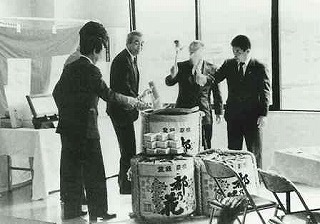 |
 |
To be sure, there were efforts to organize new networks in urban areas. Some of the young people who moved to the cities in the 1960s became adherents of the Buddhist group supporting the Kōmeitō, a Buddhist religious party, and others joined the youth group of the Communist Party. This led to the growth of these two parties during that period. The people mobilized by these parties tended to be the less well educated of those who migrated to the cities.
The 1960s also saw vigorous activity on the part of the New Left student movement. And from the 1960s into the 1970s, citizens’ movements emerged in the cities. Intellectuals and highly educated housewives were the actors sustaining these movements. These were all developments on the part of the highly educated.
 |
 |
In Japan, many of the males residing in cities were absent from their neighborhoods during the day, being at workplaces located far away. Those who stayed close to home during the day tended to be farmers or self-employed people who by-and-large supported the Liberal Democratic Party. But intellectuals such as college professors, lawyers, and physicians who did not commute to work, as well as highly educated housewives unable to find jobs because of discrimination against women, also tended to be in their own neighborhoods by day. Some members of ethnic minorities such as Koreans or Ainu in Japan who were peripheralized under the LDP regime participated in social movements. These were the people who became active in citizens’ movements.
But in the 1980s, these activities experienced decline. The principal reason is that while the communities supporting the LDP were strengthened, the labor unions that had made common cause with earlier citizen movements were weakened. The second reason is that along with modernization and the rise in education levels, intellectuals and students began to lose a sense of mission with respect to politics: they were, in other words, losing a sense of themselves as elites. The third reason is that as discrimination against women in employment lessened, there were fewer highly educated stay-at-home wives. Discrimination against ethnic minorities in social security and employment also lessened and consequently collective consciousness of them also declined.
In this way, from the latter half of the 1970s into the first half of the 1990s, social movements entered a period of sluggishness. That the economy was doing well, and people had relatively few complaints, bolstered this trend. This situation contrasted with that prevailing in other developed countries at the time. Internationally acknowledged as the “factory of the world,” with policies sustaining domestic communities, Japan was able to hold post-1970 political and social change to a minimum. For this reason, too, social movements failed to expand as they did in other developed countries.
The Changing Tide
|
Change in manufacturing labor force as percentage of total |
With the end of the Cold War, however, the situation in Japan began to change as well. First of all, manufacturing moved overseas, with the result that the number of those employed in manufacturing in 2013 were only two-thirds of those in 1992. In order to compensate for the loss in jobs, public works projects increased, with the consequence that in 1998, construction accounted for 11 per cent of total employment. This, however, led to a huge budget deficit, and public works declined in the 2000s.
In turn, this led to the decline of regional economies and a population drain into the cities. And yet, permanent employment was hard to come by in the cities. Many of those who had migrated into the cities went to work in the construction, service, welfare and nursing care industries, but these sectors tend to offer only unstable employment. Such unstable employment now accounts for fully 40 percent of total employment.
Urban migration and the decline of public works weakened the base of the LDP. Liberalization of trade and privatization of the postal service and railroads had a like effect. Membership in the party, which amounted to 5.47 million in 1991, declined to seven hundred thirty thousand in 2012. If we look at the transformation in membership in the 2000s of the LDP chapter of Aichi Prefecture, we find that the construction and postal branches declined by ninety per cent.
|
Protest for improvement of conditions of unstable employment |
Despite these changes, party politics and election campaigns remained the same. General interest in politics failed to rise. The old organizations continued to weaken, and the voting rate kept falling, but without producing a major threat to LDP rule through the 1990s.
From 1999, the LDP, in order to shore up its position, formed a coalition with the Kōmeitō, which controlled 8 million votes. In spite of this, however, from 1995, candidates officially backed by the LDP for gubernatorial races in large cities such as Tokyo and Osaka often lost. One of the reasons for this is the weakness of LDP organizing power in major cities. But it was not the Socialist or Communist Party-backed candidates who benefited. Rather, it was often famous writers or popular TV personalities.
The decline of the LDP was also reflected in who became prime minister. Once the vote-gathering base is weakened, only certain kinds of politicians can win reelection. They are the ones representing agricultural districts whose communities have survived, where representation is handed down—in other words, second and third-generation politicians. As I have already indicated, these are the people who have become prime ministers since 1993.
In other words, in Japan, leading politicians are people who have gained popularity on television and through the media, or are the relatives of famous politicians. This is a manifestation of the weakened consciousness of political participation as society lost its robustness to modernization. But this is not unique to Japan. With politics stagnant and the economy sluggish, dissatisfaction intensified. In 2009, the LDP lost in a major upset to the Democratic Party of Japan (DPJ). Burdened with a huge deficit, however, the DPJ was unable to effect major policy changes.
These were the circumstances when the Fukushima triple disaster of earthquake, tsunami and nuclear meltdown took place. It was two months after the Egyptian revolution and six months before Occupy Wall Street. A large-scale antinuclear movement, centered in Tokyo, emerged, with two hundred thousand gathering at the prime minister’s residence to protest in 2012. Each year since then, there has been a major protest movement around one or another theme.
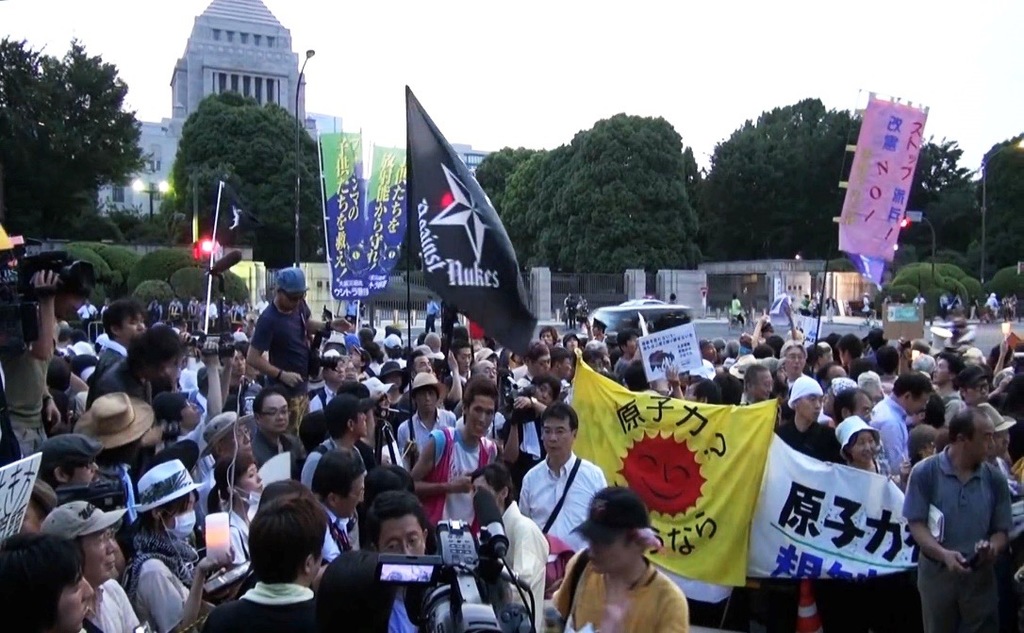 |
There are several features distinguishing these movements from their predecessors. Up to the 1960s, movements relied on the mobilizing power of the networks formed by labor unions or political parties or student self-governance associations. The leading activists were members of political parties or labor unions, and participants were workers belonging to labor networks or students who belonged to self-governance networks. Movements since 2011, however, have the following characteristics:
First of all, the sponsoring organizations are small groups ranging from several dozen to a few hundred like-minded people who have nothing to do with political parties or labor unions. They attract participants not through mobilization by formal organizations but by circulating information on the internet and social media.
Secondly, many of the activists are people who have failed to secure stable employment despite high educational levels, the so-called “cognitive precariat.” Among the activists I know are designers, self-employed information technology specialists, adjunct lecturers, and adjunct librarians—those engaged in irregular knowledge work that has mushroomed over the past twenty years. These activists, using their particular skills, have brought IT, sound equipment, music, and design to the new movements.
Thirdly, those who gather include men and women, young and old. They come because of information found on the internet, not because they were mobilized by specific organizations. In that sense, these movements are different from labor movements, which attracted workers, and student movements, which attracted students in earlier eras.
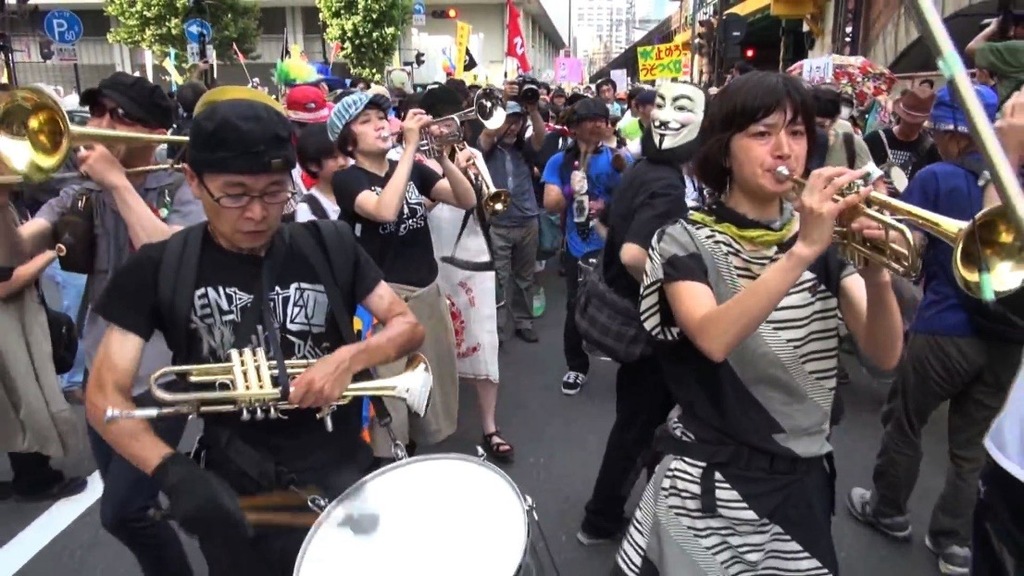 |
In the summer of 2015, a student group called SEALDs (Student Emergency Action for Liberal Democracy) emerged, and more than one hundred thousand people gathered in front of the parliament building in response to their call to oppose the security legislation. There were some reports comparing this to the 1960 anti-US-Japan Security arrangement, but in fact, they were completely different.
SEALDs is not an organization but rather a group of 200 or so like-minded people. Unlike the 1960s student movement, they did not seek to gain control of the student self-governance bodies and mobilize participants. Participants were men and women, young and old who saw the information SEALDs circulated through social media and came out of their own accord. We should probably call this not a “student movement” but a “movement sponsored by a group with ‘student’ in its name.”
We should also note that among the members of SEALDs are students who are already saddled with 6 million or even 10 million yen [approximately US $60,000 to $100,000] in student loans. At the same time that they are students, many are also members of the cognitive precariat. Given that official statistics show that half of Japanese college students have student loans, the economic situation of SEALDs members reflects a significant change in the Japanese student population since the economic boom of the 1960s.
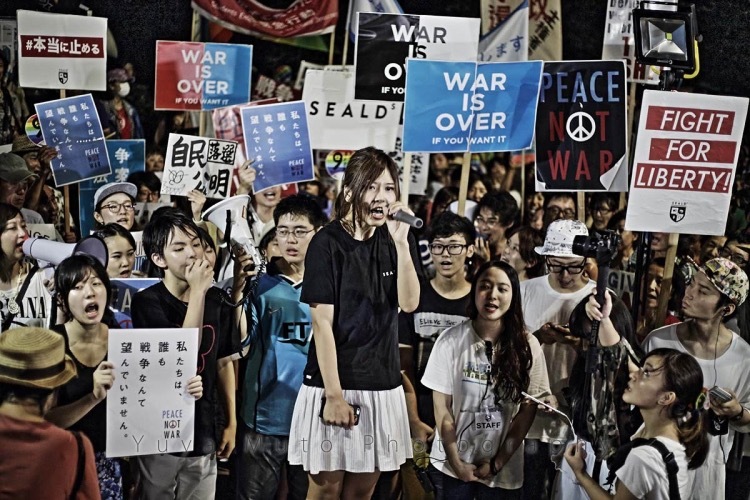 |
What is of interest is that these movements take the form of occupying the public spaces in front of the prime minister’s residence or the parliament building for a given period of time. Occupying the public space in front of Prime Minister Office and Paliament in 6pm to 8pm in every Friday was employed and continued by anti-nuclear protesters since 2012 and it was inherited by the SEALDs protest in 2015. The participants in these demonstrations spoke with one another rather than privileging one or two leaders.
These features show a certain commonality with the occupy movements that arose in various parts of the world after 2011. We can say that the Japanese movements have unfolded as part of what has been going on in the rest of the world.
Toward the Future
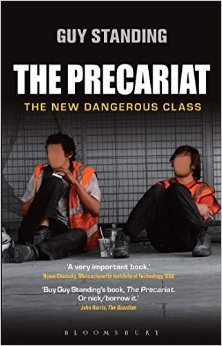 |
What, then, are the differences between these movements and the “new social movements” of the 1970s? And what about their ability to influence elections? There are features that are shared by contemporary movements and the “new social movements” of the 1970s. Both emerged from groups unrelated to political parties and labor unions. But there are distinguishing characteristics as well. In the 70s, students and highly educated women attracted attention as new actors. In the present movement, however, activists represent a broader spectrum of the “cognitive precariat” with respect to age and gender.
Participants in the 70s “new social movements” represented specific affiliations, as students, housewives, immigrants, etc. It is for this reason that the movements took the form of feminist or ethnic movements, inaugurating “identity politics.” But the current movement draws on a variety of generations and social strata. This difference is also reflected in the slogans that are used.
While many of the 70s activists invoked their specific identifying characteristics such as workers or students, the current movement uses the slogan, for example, “We are the 99 per cent.” This is because it does not represent a gathering of a particular minority or those with other specific attributes. In Japan’s anti-security legislation movement of summer 2015, the slogan, “Don’t think you can make fools of the People,” can be seen to reflect this change.
In the 1970s, those who felt excluded from political decision-making were students, highly educated women, and ethnic minorities. But today, 99 per cent of people feel dissatisfied about being excluded from political decision-making. In such a situation, “identity politics,” whose point is to affirm particular identities, can no longer be effective to mo bilize people as it did decades ago.
What kind of impact will these movements have on elections? That is not such a simple matter. Keep in mind that the participants in the current movements do not have a particular social characteristic. They are not organized within a particular network. Their sole commonality is their dissatisfaction with being excluded from political decision-making.
Therefore, even though they are able to come together in protest of a particular issue, it is hard for them to offer a shared vision of the future. It is also hard for them to organize voting around a particular party or candidate. Consequently, even if scores or hundreds of thousands appear together on the stage of activism, the parties they support are various, and it is difficult for them to have an impact on elections.
This situation was caused by s mismatch between society in the 21st century and a political system which was established in the 20th century. Many organizations, including political parties which gained power in the 20th century, have lost the ability to represent the interests of people in the 21st century. This is one reason why 99% of the people are feeling isolation from the political system. Although things might be the other way around, social movements in the 21st century have failed to adopt to the election system which was established in the 20th century.
In countries that have not adopted a proportional-representation system, it is virtually unknown for a party emerging from a social movement to make it to the national parliament. The Japanese electoral system consists mostly of single-seat constituencies, and it does not have a presidential system. In other words, there is no opportunity to elect a politician who represents. the entire country. Even if two hundred thousand people gather in Tokyo, it will have no direct impact on a regional election. This means that it is difficult to influence national elections.
If we inspect election results, we see that the conservative LDP-Kōmeitō coalition controls about 30 per cent of the population in each single-seat constituency. In 2009, when this coalition was defeated by the DPJ, the voting rate was an unusually high 69 per cent. Furthermore, in that election, the DPJ cooperated with other opposition parties and managed to field a unified candidate in each electoral district. Such circumstances made it possible to defeat the conservative coalition even though it controls 30 per cent of the vote in each single-seat constituency.
But the DPJ administration’s response to the nuclear disaster provoked despair. As a result, many DPJ supporters stopped voting. The voting rate has never exceeded 60 per cent in elections since 2012. Given these circumstances, the conservative coalition’s secure command of 30 percent of the vote assures its victory. If the opposition cannot unify, conservative victory becomes even more certain.
As this situation came to be recognized, the anti-security legislation movement of 2015 began to encourage electoral cooperation among the opposition parties. Of course, it is not easy to bring about large-scale change in electoral results in a short period of time. But we can say that social movements have brought about a certain revitalization of party politics.
In conclusion, Japan is experiencing instability, a crisis of politics, and the rise of social movements. These features are not unique to Japan, but rather, are phenomena common to the rest of the world now making their appearance within a Japanese context. Keeping this in mind, we recognize that in order to understand Japan, we need to understand the world. At the same time, in order to understand the world, we need to understand Japan. This is why researchers from various countries need to cooperate. I hope my talk today might serve as an occasion for you to better understand Japan and the world in which we live.
Oguma Eiji’s film, “Tell the Prime Minister” and his lecture on September 27, 2016 comprised the 11th Tetsuo Najita Distinguished Lecture in Japanese Studies at the University of Chicago.



